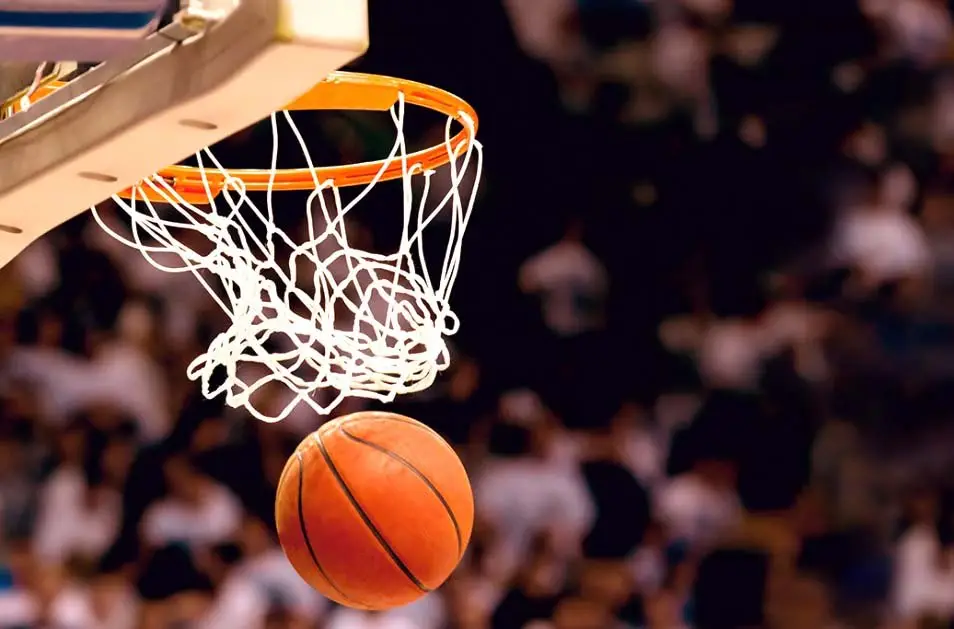It’s not the coaches or the gym that determine your ball skills. It all starts with the object that is touched hundreds of times every day. It is the object that shapes the feel of the game, the transfer of momentum, the feedback. The question of the choice of basketball therefore does not determine comfort, but performance. The right choice minimises mistakes, reduces hand fatigue, improves control and speeds up reactions. The wrong choice – ruins technique, disrupts timing, destroys rhythm. When choosing, it is important to consider not only the size, but also the surface, grip, type of court and level of training.
Dimensions of basketballs: How to choose the diameter?
The parameters of the ball are standardised, but different categories of players require different options. Diameter, weight, rebounding power – everything affects the technique. The size is chosen according to age, gender and physical fitness:
- Size 7 is the official standard for adult men. Weight – 600-650 grams, circumference – 75 cm. This ball is used in the NBA, FIBA and all high-level tournaments. It offers maximum bounce, requires power, but also offers control at speed.
- Size 6 – recommended for women and juniors aged 12-15. It has a diameter of about 72 cm and weighs about 540 grams. Lighter, more compact, does not require overloading the wrist. Ideal for learning techniques and first tactics.
- Size 5 – basic level. Suitable for players aged 8-11 years. Diameter – 70 cm, weight – 470 grams. Used in primary schools and amateur sections. Not for playing, but for training.
Coating: material decides grip and wear
 From the structure of the square depends on the type of attribute. The division is divided into two classes: Basketball for the street and for the hall. The first requires resistance to asphalt, the second – toughness with the parquet. Materials:
From the structure of the square depends on the type of attribute. The division is divided into two classes: Basketball for the street and for the hall. The first requires resistance to asphalt, the second – toughness with the parquet. Materials:
- Rubber is a favourable choice for the street. The surface is rough, bounces well off concrete, resistant to moisture. Of the minuses – reduced control, quick wear, poor behaviour in the gym. For beginners or games on the court – a practical option.
- Synthetic leather is a universal solution. Suitable for indoor and street use, balances durability and grip. Ensures safe riding, comfort when overtaking, resistance to minor damage. Used in semi-professional and university games.
- Natural leather – elite class. Only suitable for indoor use. Gives perfect grip, softness and precise control after breaking in. Insensitive to moisture, does not tolerate asphalt. Used for official matches. Careful maintenance is essential.
Where you play: the influence of the court
The platform dictates the requirements for choosing the right basketball. It is a mistake to take an indoor ball and play on the concrete. The surface cancels the coverage, interrupts the rebound and cancels the trajectory. So the selection starts with analysing the conditions. Outdoors, dust, moisture and temperature fluctuations prevail. Durability, high bounce and a rough texture are required here. Rubber models with a reinforced body are ideal. It is important that the grooves do not become clogged with dirt – this impairs rotation and impact. The climate in the hall is different. Parquet requires softness, sensitivity and toughness. A natural floor covering or soft synthetic materials enable precise control. The ball must not slip, especially when serving with an interception.
Tips: How to choose a basketball
How to choose a basketball? It is not enough to rely on taste. Suitable takes into account the load on the joints, grip conditions, wear resistance. A wrong choice – the hand will be overloaded and the technique will be thwarted.

Recommendations:
- Weigh up age and fitness: Even with experience, you should not reach for a size 7 junior. Better a controlled throw than a loss of control.
- Consider the surface of the court: rubber or rough plastic for the street, leather for the hall.
- Check the grip: run the palm of your hand over the ball. If it slips, give up. A secure grip starts with a secure grip.
- Test the rebound: At a normal height, the ball should reach your chest. If it is lower, the pressure or the quality of the surface is questionable.
- Pay attention to the seams and channels: Smooth seams provide predictable spin and a stable bounce.
- Consider the intensity of your game: hybrid materials are better suited for daily practice. Natural leather is for competition, not for the street.
- Avoid shine: Shiny balls look nice, but they slide. Matte texture is the key to accuracy.
Shape, weight and balance: how to choose the right basketball
Weight and shape are crucial parameters when it comes to shooting and accuracy. Even the slightest imbalance in the design affects the trajectory and delays reaction time. The shape of the ball must be strictly spherical – no off-centre shapes, no deformations. Manufacturers label the ball with the terms ‘official match ball’ or ‘precision balanced’, which stands for a stable spin and even weight distribution. The quality is easy to check: The ball should spin evenly when thrown vertically without deviating or shaking in flight.

A one-sided overhang or a weighted centre distort the trajectory, which is particularly critical for three-point shots and fast passes. Professional players only choose balanced models with a welded or seamless construction.
Wie man einen Basketball für das Wetter auswählt: Das Spiel wartet nicht auf die Sonne
Das Wetter beeinflusst das Verhalten des Balls ebenso wie die Oberfläche. Bei kaltem Wetter wird der Gummi steif und der Ball verliert seine Elastizität. Bei heißem Wetter überhitzt er und klebt an der Handfläche fest. Regen zerstört die Struktur des Naturleders und führt zu Schwellungen und Rissen. Wie wählt man einen Basketball aus, wenn die Saison das ganze Jahr über andauert? Die Lösung sind angepasste Materialien. Für ein wechselhaftes Umfeld eignen sich kombinierte Schalen: Kunstststoffe mit einer feuchtigkeitsschützenden Beschichtung. Bei hoher Luftfeuchtigkeit sind Bälle mit einer feinen Textur ohne tiefe Rillen vorzuziehen.
Quality control: where not to skimp
Price is not always an indicator. There are expensive models on the market with questionable grip and cheap models with good structure. But in training or matches, it’s all about stability. To rule out a defect, it is worth checking the parameters manually:
- Seams should be recessed, not protruding beyond the surface.
- Pressure – correspond to the mark 7.5-8.5 psi.
- Rotation – smooth, without jumps.
- Elasticity – return the ball 1.4-1.6 metres when dropped from a height of 1.8 metres.
When to change: service life and signs of wear and tear
Even the best ball loses properties. If the model loses grip, becomes slippery or deformed, it’s time to look for a replacement. In training mode, a street ball lasts on average 3-5 months, a gym ball – up to 1 year with careful use. Regular cleaning extends the service life. Wash the ball with a soft brush, without chemicals. Store – in the shade, at room temperature, avoiding over-drying.
Conclusion
 Technique, tactics, speed – everything is meaningless without the basic tools. The choice of basketball has a direct impact on training efficiency, joint safety, quality of control and enjoyment of the game. The choice of size, cover, grip and balance are the foundation. Professional players test dozens of models to find ‘their’ ball. For amateurs, it is enough to follow the basic principles and every throw will be more precise.
Technique, tactics, speed – everything is meaningless without the basic tools. The choice of basketball has a direct impact on training efficiency, joint safety, quality of control and enjoyment of the game. The choice of size, cover, grip and balance are the foundation. Professional players test dozens of models to find ‘their’ ball. For amateurs, it is enough to follow the basic principles and every throw will be more precise.
 en
en  de
de  ar
ar  es
es  hi
hi  fr
fr  nl
nl  it
it  pt
pt  el
el 









